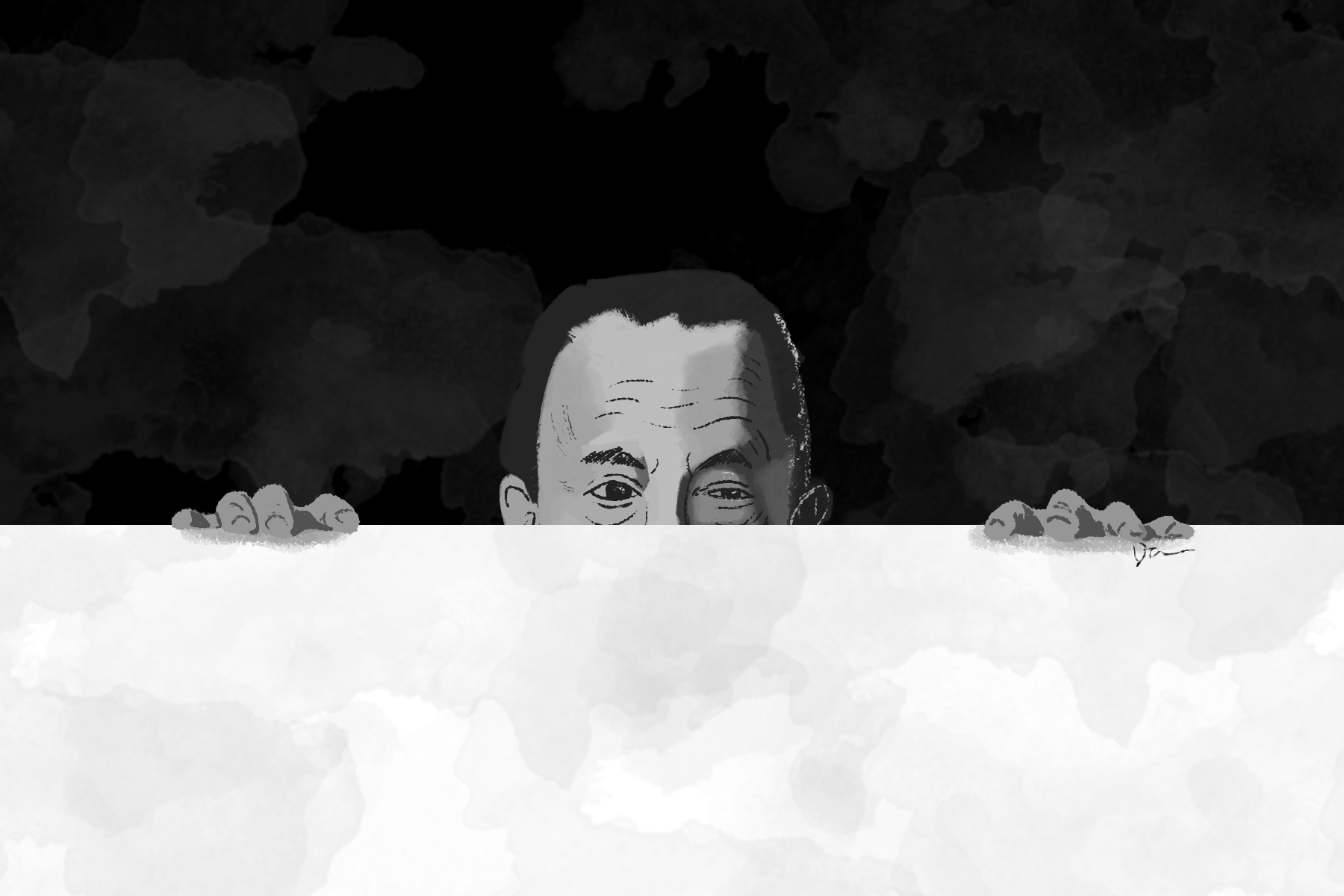The 15-minute long “ANIMA” occupies a unique place on Netflix. While the mega-popular streaming service has dabbled in short films, “ANIMA” is a nontraditional example of the artform because it centers around three songs from Radiohead lead singer Thom Yorke’s new album, also titled “ANIMA.”
The ANIMA one-reeler is now available on Netflix: https://t.co/qW755h3qL3 pic.twitter.com/D3ysE9Qesi
— Thom Yorke (@thomyorke) June 27, 2019
Despite being centered around Yorke’s album, “ANIMA,” directed by Paul Thomas Anderson (“Magnolia,” “Boogie Nights,” “There Will Be Blood”), features stunning shots by Darius Khondji (“Se7en”) and has hauntingly beautiful choreography, helmed by Damien Jalet, separating the Netflix exclusive from nearly every music video on the internet.
Yorke and Anderson might appear to be unlikely collaborators on a short project, but they have a history. Radiohead band member Jonny Greenwood ran the scores on some of the director’s projects. Yorke previously tried a more film-like video for his music in a project with Luca Guadagnino titled “Suspiria.”
Yet, the work of both the singer and Anderson more effectively serve a story that is simultaneously larger and smaller in scope, allowing “ANIMA” to transcend short films and music videos as some ingenious combination of the two.
Despite working in different mediums, Yorke and Anderson complement each other flawlessly as the singer’s falsetto continually collides with the color palette presented on screen. “ANIMA” follows a three-act structure with every section of Anderson’s film corresponding with one of Yorke’s three songs.
Yorke and Anderson’s bold decisions to bring up questions and possibilities about the meaning of “ANIMA,” both in a literal and figurative sense, speak to larger themes about the state of modern society.
For decades, Yorke has been combating dystopias in his music with and apart from Radiohead. Meanwhile, Anderson has explored the impacts of the relentless pursuit of profit in films such as “There Will Be Blood.” Yorke and Anderson’s worries about the dystopian nature of society shape “ANIMA.”
Yorke’s song “Not the News” is a hypnotic beat with sudden beep-like sounds that jolt the listener. The track plays on the opening scene, where people, who are seemingly industrial-like workers all on a train, struggle to keep themselves awake. The music matches with the train riders’ state of falling in and out of consciousness.
The plight of the workers on a tubelike train seems to be a metaphor for the drab plight of modern workers going through a soulless routine of work, disregarding sleep. No one makes eye contact as they all move in unison, all wearing the same bland gray uniforms with no way to differentiate any of them.
Is this a metaphor for how the modern 9-to-5 grind robs people of any individuality and prevents humanity from forming any kind of connection with one another? Does Yorke intend to show that modernity and technology remove people from each other? Or is the struggle of staying awake a metaphor for how people are not conscious of their dreams and aspirations when struggling with necessities, such as being able to sleep?
Yorke explains the symbolism in an interview with Apple Music. The song is about dreams and the idea that sleep-deprived people cannot dream because they are not able to process their lives on a subconscious level. Is “ANIMA” supposed to show how exhaustion prevents people from showing any humanity?
Yorke, who also stars in the video, breaks the monotonous action when, while everyone else is getting off the train, he notices that a woman (played by the musician’s partner Dajana Roncione) has left her lunchbox behind. He then breaks the routine to reach Roncione, sprinting in the opposite direction of everyone else before struggling to make it through the subway station turnstile.
Yet, as Yorke struggles to get through, outside of the line of workers, someone else snatches Roncione’s lunch box. Then, he takes a literal leap of faith hurling himself over the turnstile before running through a quarry-like setting, running in the opposite direction of everyone else, in pursuit of the lunchbox. Does Roncione leaving behind the lunchbox illustrate how an obsession with work forces people to lose sight of their own needs?
Since Yorke breaks the cycle once he decides to return the lunch box to Roncione, does this action show how any bit of kindness in a ruthless modern world is not typical and an act of nonconforming rebellion?
As Yorke finds the lunchbox, the song “Traffic” begins to play. Yorke descends onto a white pristine horizontal plane. The nightmare-esque place does not seem to follow the rules of linear movement or time. Does this white plane above everyone else represent the elite in society?
Others then form a line and crawl towards Yorke in opposition to him, forcing him to slide off the white plane as he struggles to hold onto the lunchbox. Yorke eventually forces himself back on the white plane. Instead of trying to climb, the Radiohead star stops and sits down in peaceful thought as papers and trash begin to swirl around him before he slides off somewhere else.
Do the papers and trash represent Yorke accepting the mundanity and frivolous nature of modernity as he rejects the climb toward what is deemed elite? Is Yorke implying that the only way to obtain happiness is to transcend social hierarchy by accepting its flaws and stop climbing?
Yorke wakes up in an old European city street with Roncione. There, the two begin to dance together as the emotional “Dawn Chorus” plays. The lunchbox, once vital, is now gone, perhaps showing that how two people making a connection pales in comparison to the relationship itself.
As Yorke and Roncione blissfully exist in an old-world setting, other couples follow, dancing behind them. Yorke and Roncione give people the unconscious permission to break the mold themselves. Is Yorke indicating that just existing in happiness permits others to do the same?
Yorke and Roncione dance in a field as the sun rises before boarding a train together. In the final shots, Roncione disappears from frame as the camera focuses on Yorke finally falling asleep, bring “ANIMA” full circle.
Do Yorke and Roncione go through this ritual on a nightly basis? Is the ecstasy that the two lovers have in their relationship what gets them through the monotony of the day? Does Yorke spend every day trying to escape work to be with Roncione?
Other speculations are about the meaning of short film’s title itself. “Anima” in Latin means mind or spirit. With Roncione fading from screen in the final moments, is Yorke’s character daydreaming this relationship to give his life some meaning?
“ANIMA” also is an outdated Jungian term to describe the female spirit within a man’s personality that men often project onto others in images such as the virgin, goddess and divine mother. Is Yorke’s character projecting what he is missing in his misery onto a fantasy of what he longs for?
“ANIMA” is a beautiful and confusing piece, open to interpretation. With all the hypotheticals “ANIMA” raises, perhaps Yorke and Anderson are explaining that people need to ask questions in the modern world.
Yorke also explains in his interview with Apple Music that he wants viewers and listeners to feel from his art. Regardless of how Yorke and Anderson feel about the state of the world, it seems obvious these creators stress that forging meaningful, loving relationships can be how one makes the world a better place.
















